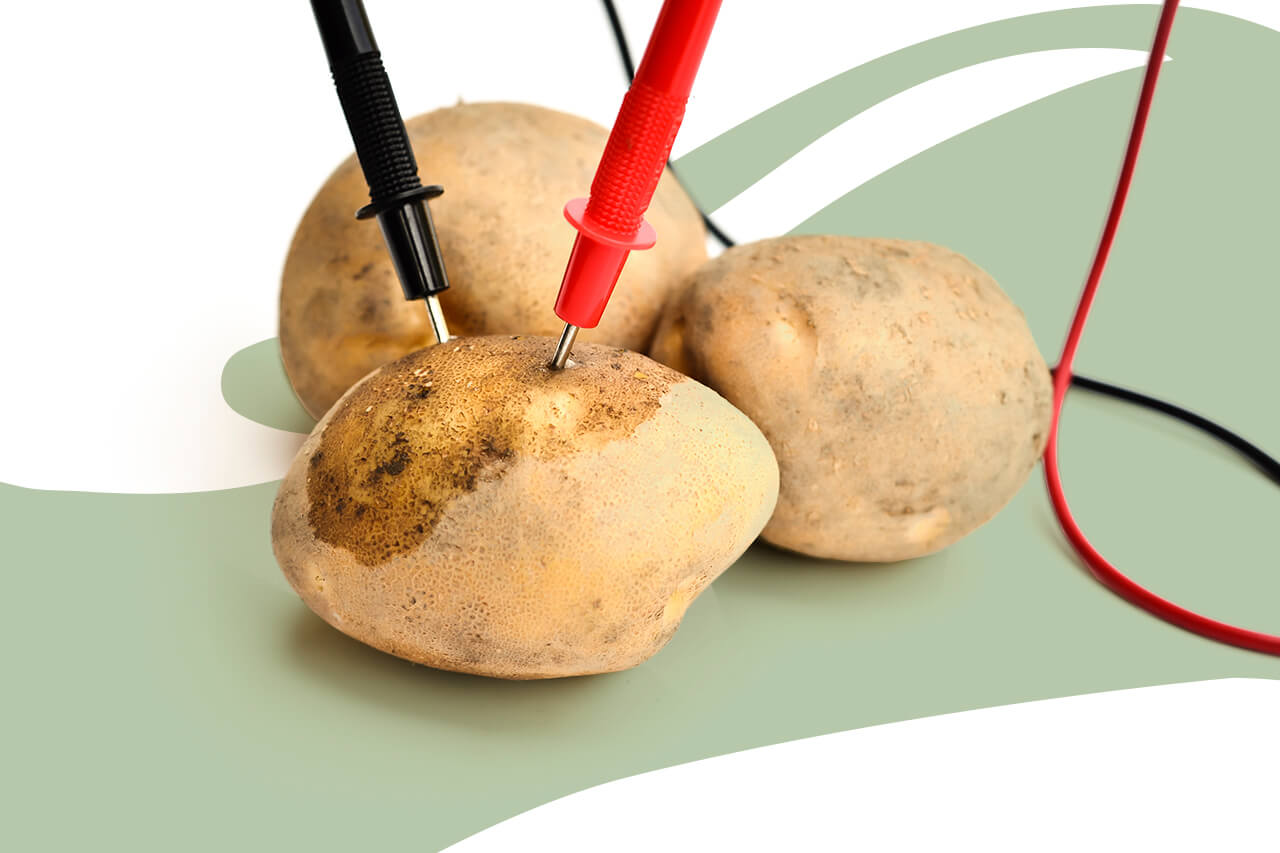
How to Make a Potato Battery
We are reader-supported. When you buy through links on our site, we may earn affiliate commission.
Society debated over the legitimacy of an amateur science experiment creating electricity out of household vegetables. One notable video featured an individual charging their phone with a potato. Viewers tested the theory and experienced awe when electricity began flowing out of the vegetable.
Many individuals question why engineers use environmentally degrading materials to create batteries when using non-depletable resources, like potatoes. Fortunately, a consumer holds power to source their energy from the material of their choice. With adequate awareness, you can charge your electronics with vegetables instead of ecologically harmful elements.
A Battery’s Composition
Before crafting your potato battery, it is helpful to access a conventional battery’s composition. The device stores chemical energy and converts it into accessible electricity. Engineers make batteries out of electrochemical cells consisting of two electrodes and an electrolyte.
Batteries create electricity through a chemical reaction. After one electrode reacts, it moves to the next electrode until the energy reaches each cell. Anodes and cathodes power the chain reaction, transferring electrons.
A battery also requires an electrolyte to move charged ions. External wires help negatively charged electrons enter the device, and electrolytes move positively charged elements nearby, balancing the negative flow. In the potato battery, the vegetable acts as the electrolyte, aiding the containment of electricity.
What is the Science Behind a Potato Battery?
Potato batteries function chemically as conventional lithium-ion batteries do. They use two metals, one with a positive and one with a negative charge. Most individuals use zinc as the electrode and copper as the cathode.
When you connect the metals to the potato, it creates a medium for electricity production. The temperature of the electrolyte creates an internal resistance which scientists examined. They discovered boiling the potato for eight minutes loosened internal organic tissues, helping electrons move more freely.
Researchers also found energy benefits from dividing the potato into quarters. When they held each piece between the zinc and copper, they increased the energy output by ten times. Individuals can use potatoes at home as electrolytes, creating sustainable batteries.
The Steps to Making a Potato Battery
When building a potato battery, you can start by gathering your supplies. You will need three potatoes, three nails or screws, three pennies or copper wires, five dual alligator clips and one LED clock with a battery compartment.
Individuals can begin by placing a nail about one inch into the vegetable without puncturing the opposite side. Then they may draw a minus sign next to the nail, signifying its use as the anode.
Next, you may push a penny into the other end of the potato, leaving at least half of it sticking out. Then you may draw a plus sign next to the penny, signifying its use as the cathode. You can also repeat the process on the other two potatoes.
Then, you can clip each penny to another potato’s nail. Once all parts are connected, individuals may clip the first potato’s nail to the minus sign inside the clock’s battery compartment. They can also attach the third potato’s penny to the plus sign and watch the clock begin moving.
A Sustainable Power Solution?
Lithium-ion batteries create environmental challenges, limiting their sustainability. The element is nonrenewable, and its mining processes produce deadly pollution. Inadequate regulations at a lithium mine in Tibet caused a toxic chemical leak, contaminating the Liqi river.
The pollutant killed mass quantities of marine life and degraded drinking water sources. Witnesses also saw dead cattle and yak floating down the river. Over time, lithium-mining-related pollution can cause adverse effects on the global ecosystem.
Mining also depletes agricultural water sources in areas like Chile. South America contains over 50% of the Earth’s metal underneath its salt flats. Professionals drill holes in the salt, letting mineral-carrying brine reach the surface.
Unfortunately, when brine fills one area, it depletes water sources in another. Pumping lithium from under salt flats creates resource-scarcity-related challenges for farmers. Mining uses 65% of Chile’s water source, limiting quinoa production and the protection of livestock.
Individuals can reduce their reliance on lithium by using alternative battery forms. Professionals at the Hebrew University are developing a potato-based battery able to power LED lights for 40 days. They discovered the cost-effectiveness and sustainability of the technology, creating a potential replacement for lithium-ion batteries.
Engineers are still developing a large-scale system able to support residential power needs. While they continue working on technological advancements, individuals can use hydrogen fuel cells to access sustainably stored electricity. During their uses, fuel cells release pure water instead of greenhouse gas emissions.
The power source is also cost-effective, creating electricity for less than fossil fuels. When society adopts hydrogen fuel cells, it can decrease atmospheric degradation and save money over time. Individuals can also diversify their energy sources, accessing the most sustainable electricity.
How to Diversify Your Power Sources
Currently, potato battery technology is unable to support all of a consumer’s power needs. We can utilize 100% emission-less energy by using various electricity sources. Solar, wind, fuel cell, geothermal and more can support residential energy demands, atmospheric and surface-level pollution.
Share on
Like what you read? Join other Environment.co readers!
Get the latest updates on our planet by subscribing to the Environment.co newsletter!
About the author
Jane Marsh
Starting from an early age, Jane Marsh loved all animals and became a budding environmentalist. Now, Jane works as the Editor-in-Chief of Environment.co where she covers topics related to climate policy, renewable energy, the food industry, and more.





